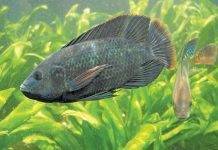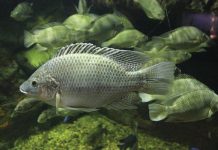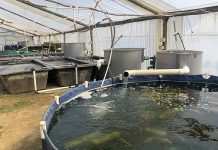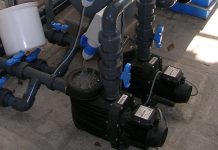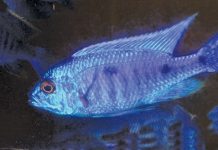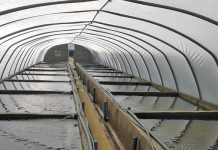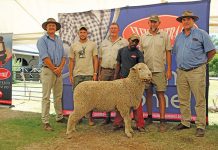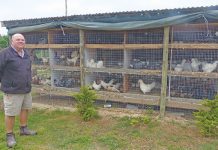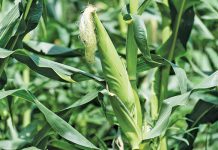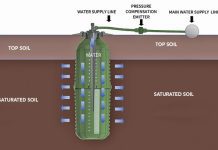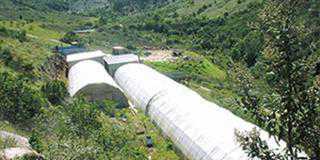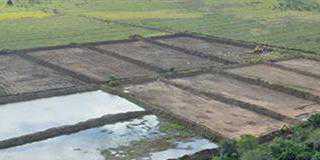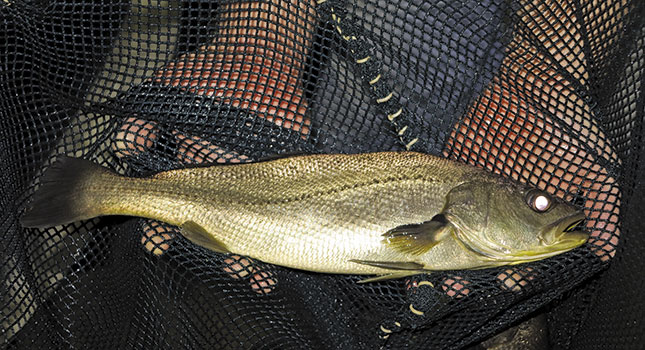
Photo: Jay Ferreira
The Bluecap fish farm on the West Coast, which started as a test facility four years ago, had its first commercial dusky cob (kabeljou) sale in July. “We thoroughly tested the local market before starting commercial sales,” says manager and shareholder Ingo Beckert. “There’s a huge export market open as well, but that’s for the future. For now, we’ll supply the local market with fresh farmed cob.”
READ:Red locusts a threat in Zambia, Zimbabwe
Why the West Coast?
“We were driven to develop an industry that’s working worldwide, but not yet in South Africa,” says Beckert, who has long been involved in the aquaculture industry in various fields, ranging from manufacturing feed, to supplying aquaculture technology hardware.
“This is one of the oldest marine aquaculture sites in southern Africa – it was started in the mid-1980s. At various times, it was a crayfish holding facility, a trout farm and an abalone farm. It’s sheltered, but still right on the water’s edge. We have as little impact on the environment as possible, and are also as close as we can get to our potential market in Cape Town.
Beckert says that another reason for choosing this site is that the community on the West Coast is accustomed to working with fish, and there is a growing need for employment because of declining fish stocks. “Fish farming really belongs here; it’s the natural environment for it. The cob are also found wild here in the sea, though they are mostly silver cob. Dusky cob do live along the inner shore, though,” he says.
“While little research has been done on farming silver cob, Guy Musson pioneered dusky cob farming in South Africa and has been breeding, hatching and growing fish for 12 years,” says Beckert. “We decided to farm dusky cob because the research had already been done. Because we’re a land-based facility, and don’t do cage farming, conditions are controlled and the cold water is not a big issue.”
While colder than the Eastern Cape (where South Africa’s two other dusky cob farming operations are located), Beckert says that Paternoster is not actually as cold as it is perceived to be. “We only have about 30 cold days a year, but we still have to heat the water used for the fish throughout the year,” he explains.
Management
To date, the Bluecap fish farm has had no incidence of disease, and Beckert says he does not know of any specific diseases that affect dusky cob. He adds that diseases usually occur when the conditions in the fishes’ environment –temperature, oxygen supply and feeding – are not optimal. Overcrowding or underfeeding, however, could cause cob to cannibalise each other, resulting in substantial stock losses.
Beckert says that commercial finfish farming is very new to South Africa. “This is possibly because we actually eat very little fish in this country. World fish consumption averages 16kg per person per annum, but South Africans eat on average only about 1,6kg per person per annum. In the past, we ate more fish because it was cheap and available, but today it is neither – and it’s getting scarcer by the day.”
Fish farming is not new to Africa, however; 600 000t of catfish are farmed in Nigeria every year. Fish provides a viable source of protein that requires less energy input than other options.“To grow 1kg of beef, 8kg of feed is required,” explains Beckert, “but to grow 1kg of fish requires only 1kg of feed.” The Bluecap fish farm’s dusky cob is sold at 600g and 1kg weights.
Acording to Beckert, South Africans definitely want to eat more fish, but there is simply not enough available. “We did test marketing at restaurants, where 20% of the meals leaving the kitchen were seafood. When the restaurants added farmed cob to the menu, this figure doubled,” he says.
The reason is that consumers have become far more discerning about what they eat, demanding that it must be sustainable and from a reliable source, such as farmed dusky cob. The South African Sustainable Seafood Initiative (Sassi) plays an important ethical role in this regard. He adds that restaurant chefs no longer have the option of placing unsustainable fish species on their menus, which is why musselcracker has virtually disappeared off menus.
The pricing of farmed cob at restaurant door level is slightly higher than that of wild cob, says Beckert, but wild-caught cob is not readily available and is also on the Sassi orange list because they are semi-endangered, so customers are reluctant to eat them. Reputable restaurants adhere strictly to the Sassi list because consumers have become powerful drivers of ethics through posting comments on websites and social media. “These restaurants don’t want bad ‘press’ or be associated with unethical behaviour,” explains Beckert.
Ideal speacies to farm
“For now, dusky cob is the marine finfish of choice to farm in South Africa because we know how to replicate optimal conditions in a controlled system,” he says. By contrast, deep water fish, such as tuna, are difficult to study and their optimal breeding conditions are unknown. Other fish, however, such as yellowtail, grunter and geelbek, are being considered for farming, but this is still five to 10 years down the line.
Certain freshwater species can also be farmed, but South Africa is not well-suited to this because of its moderate climate. Trout require year-round cold water, whereas tilapia and catfish need year-round warm water. There is no market for catfish in South Africa because of its dark flesh, which consumers perceive to be inferior.
The worldwide tilapia market is about two million tons, so South Africa would struggle to compete on price against countries that have the natural environment for farming tilapia. “The answer is to produce indigenous species, and stop trying to compete with New Zealand, Australia or Norway,” insists Beckert.
Mentorship
Beckert’s ultimate goal is to empower others to enter the fish farming industry so that they can help address the shortage of fish in South Africa, and also produce for the export market. “Europe would be our first export market, because the Asian market currently produces more fish than can be consumed, and at lower prices,” he explains. “Fish farming can uplift an entire community and new entrants can be mentored into the industry.”
He stresses, however, that mentorship can take place only once an industry with successful players has been created. Smaller players can then supply into the bulk market and be shielded from the negative dynamics of the marketplace. “At the moment we still rely on knowledge-sharing between fish farmers, but it’s essential to become self-sustaining as soon as possible,” he says.
Beckert adds that in about 18 months his company will have a six-year history, and the farm will be more viable, giving them a better understanding of the precise requirements of fish farming. From set-up to viability takes a long time because of the pioneering nature of dusky cob farming. Once there is a ‘blueprint’ in place, viability will be reached much faster.
Although the farm’s current capacity is about 80t per annum, the team at Bluecap are not yet sure about the exact quantity that could realistically be handled in the future. “Once we have a proven system, we can estimate our ultimate capacity, but it can take longer than anticipated,” explains Beckert.
He welcomes the fact that more people are getting involved in aquaculture, because the market is not yet saturated and the end-result will be a better product. “The local community will also benefit through job creation,” he stresses. The Bluecap fish farm currently employs 16 staff, 12 of whom are from the local community and were previously unemployed.
Conservation
“At the moment 50% of the fish consumed in the world are farmed, but this is increasing all the time,” explains Beckert. “There may still be edible species of fish in the sea that we’re unaware of, but fish is set to become much more expensive. The ‘job’ of aquaculture is to supplement fish supplies, and by default, protect wild stocks to some extent.”
Farming for the future
Beckert believes that fish farming offers an important way forward for protein provision in South Africa and will have numerous positive spin-offs. “The abalone industry was given no chance of success 15 years ago, but now it’s a thriving industry because of the determination of certain individuals. It can be the same for cob farming.
“As soon as there are some success stories, it will generate more interest and more people will want to become involved. “I believe there’s enough money available to develop the industry, so once it’s established, funding shouldn’t be the problem it is now. What we need at this stage are entrepreneurs with determination.”
Beckert sees South Africa’s marine finfish industry as having “huge potential” and people need to be mentored to develop and run projects. “It’s definitely the way forward and it’s becoming more important than we tend to think, because the shortage of wild fish is only set to become worse,” he says.
Email ingobeckert@ gmail.com.
This article was originally published in the 6 September 2013 issue of Farmer’s Weekly.

